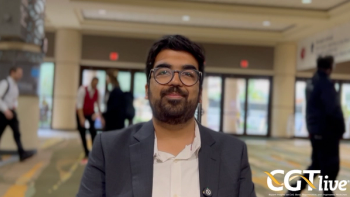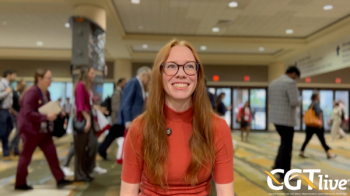
Nusinersen Well-Tolerated After Zolgensma in SMA
Data from the phase 4 RESPOND trial were presented at the 2023 MDA Conference.
Children with spinal muscular atrophy (SMA) treated with nusinersen after previous treatment with the gene therapy
These data were presented at the
“Animal models and limited human postmortem studies have demonstrated incomplete transduction of motor neurons by the AAV9 vector. Nusinersen has potential to increase SMN protein in untransduced motor neurons, which may provide additional clinical benefit to individuals with SMA,” Brandsema and colleagues wrote.
The single-arm RESPOND study is recruiting children at most 26 months of age with SMA treated with nusinersen after previousZolgensma treatment. These participants have at least 1 SMN2 copy, are nusinersen-naïve, and have suboptimal clinical status at baseline on motor function, respiratory support, swallowing/feeding ability, and other domains. Participants receive 4 loading doses followed by maintenance doses every 4 months. RESPOND is primarily providing baseline characteristics of this population and secondary outcome measures are assessing interim safety of nusinersenand clinical outcomes.
READ MORE:
As of 15 August 2022, the study had enrolled and dosed 34 children. Median time from gene therapy treatment to first nusinersen dose was 6.9 months (range, 3–31). At baseline, most children (n = 28) demonstrated suboptimal clinical status in at least 2 domains after gene therapy treatment; the most common domains were motor function (n=33) and respiratory function (n=22). Baseline mean Hammersmith Infant Neurological Examination (HINE-2) total score was 6.7 (n=33; standard deviation [SD], 5.7). Thirty participants had 2 SMN2 copies. Children were on nusinersen for a median of 183 days (range, 1–540).
Safety profiles were consistent with SMA or nusinersen’s safety profile. The most common adverse events (AEs) were upper respiratory tract infection (n=6) and viral upper respiratory tract infection (n=5). Two participants had mild proteinuria which resolved and was considered related to nusinersen treatment. Nine participants had serious AEs considered unrelated to nusinersen, which resolved. No deaths or post-lumbar puncture syndrome events occurred.
“In RESPOND, the majority of enrolled children previously treated with OA had suboptimal clinical status in ≥2 domains. Interim safety findings were overall consistent with nusinersen’s safety profile,” Brandsema and colleagues wrote.
REFERENCE
Brandsema J, Parsons J, Kuntz N, et al. Baseline characteristics and interim safety in RESPOND: A phase 4 study in children with SMA treated with nusinersen after onasemnogene abeparvovec. Presented at: 2023 MDA Conference, March 19-22; Dallas, Texas.
Newsletter
Stay at the forefront of cutting-edge science with CGT—your direct line to expert insights, breakthrough data, and real-time coverage of the latest advancements in cell and gene therapy.

















































